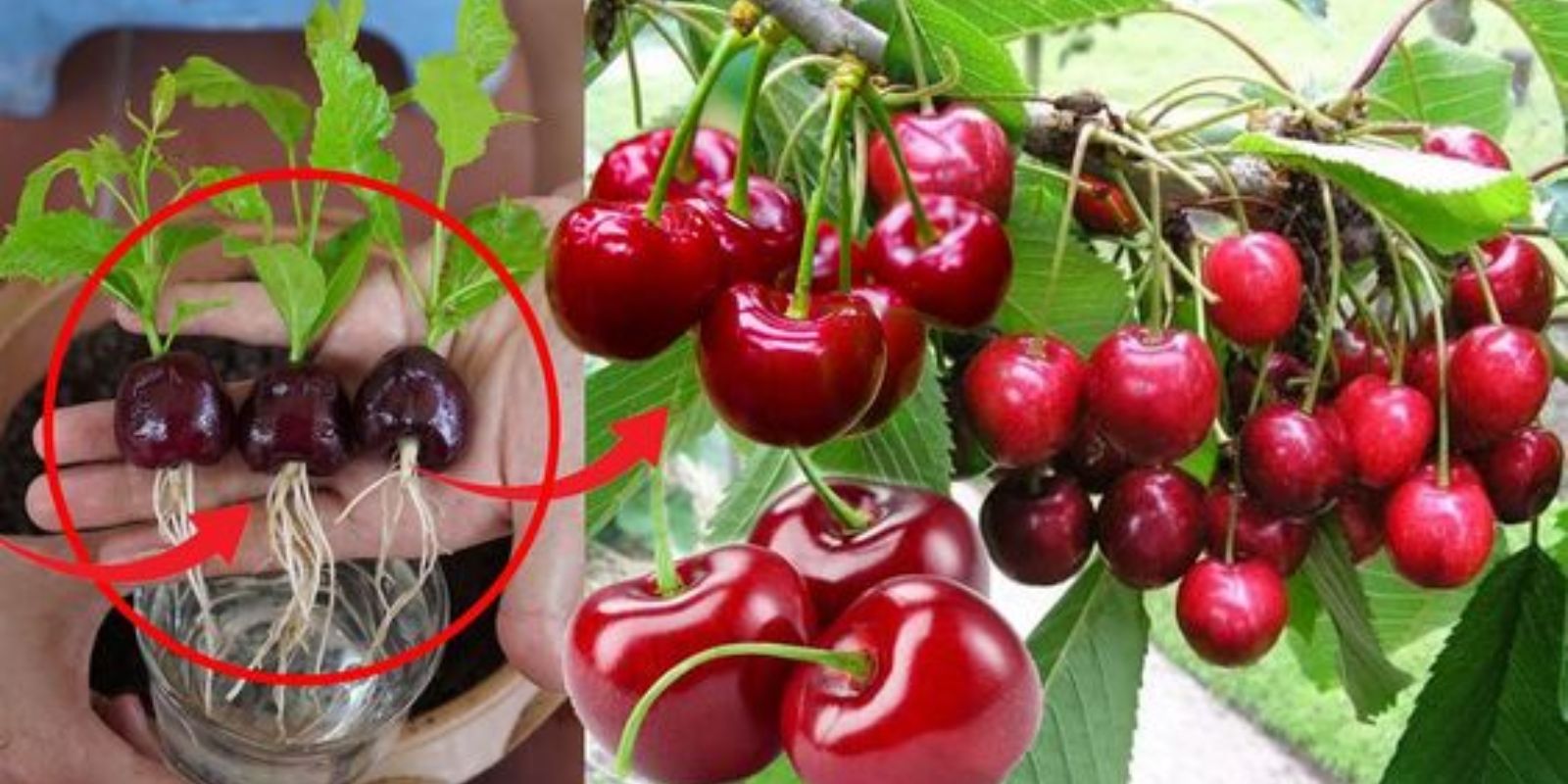Introduction
Growing cherry plants at home can be a deeply satisfying endeavor, offering the chance to enjoy delicious, homegrown cherries fresh from your own garden or indoor setup. Whether you’re an experienced gardener or a beginner, the process of cultivating cherry plants can be straightforward with the right approach. In this guide, we’ll explore how to grow cherry plants quickly and effectively, ensuring a fruitful harvest.
1. Choosing the Right Variety
Selecting the appropriate cherry variety is crucial to your success. There are two main types of cherry trees: sweet and sour. Sweet cherries are perfect for fresh eating, while sour cherries are great for cooking and preserves. For home gardeners, especially those with limited space, dwarf or compact varieties are ideal. Varieties such as ‘Compact Stella’ or ‘North Star’ are well-suited for smaller gardens or container planting.
2. Preparing the Soil
Cherries thrive in well-draining soil with a slightly acidic to neutral pH, ideally between 6.0 and 6.8. Begin by testing your soil’s pH using a soil test kit. If necessary, adjust the pH by adding lime to raise it or sulfur to lower it. Enrich the soil with organic matter such as compost or aged manure. This not only improves soil fertility but also enhances drainage and soil structure, providing a nutrient-rich environment for your cherry plant.
3. Planting the Cherry
When planting cherry trees, timing is important. The best time to plant is in early spring or late fall when the plant is dormant. If you’re planting in containers, choose a pot with drainage holes and use a high-quality potting mix. For garden beds, ensure the planting area has adequate sunlight and space. Space standard-sized cherry trees about 20-30 feet apart, while dwarf varieties can be planted closer, around 8-10 feet apart.
Dig a hole that is twice as wide as the root ball but no deeper. Place the tree in the hole, making sure the graft union (the swollen area where the tree was grafted onto the rootstock) is level with the soil surface. Fill in the hole with soil, gently tamping it down to remove air pockets.
4. Watering
Watering is a critical component of cherry plant care. Cherry trees require consistent moisture, especially during the growing season. Water the plant deeply once a week, allowing the soil to dry out slightly between waterings. Avoid overwatering, as waterlogged soil can lead to root rot. During the hottest months, increase watering frequency as needed to keep the soil evenly moist.
5. Sunlight
Cherries require plenty of sunlight to thrive. Place your cherry plant in a location that receives at least 6-8 hours of direct sunlight daily. If growing indoors, ensure the plant is positioned near a south-facing window or under grow lights. Adequate sunlight promotes healthy growth and fruit production, as cherries need the energy from sunlight to produce fruit.
6. Fertilizing
Fertilization helps cherry plants grow strong and produce abundant fruit. Use a balanced, slow-release fertilizer with equal parts nitrogen, phosphorus, and potassium. Apply the fertilizer in early spring before new growth begins, and then again in mid-summer. Follow the manufacturer’s instructions for the correct application rate to avoid over-fertilizing, which can harm the plant.
7. Pruning
Pruning is essential for maintaining the health and shape of your cherry tree. Start by removing any dead, damaged, or crossing branches. This helps improve airflow and reduces the risk of disease. Prune in late winter or early spring before new growth starts. For dwarf varieties, pruning helps control size and encourages a more compact, bushier plant. For standard varieties, focus on creating an open center to allow light penetration and air circulation.
8. Pest and Disease Control
Cherry plants can be susceptible to various pests and diseases. Common issues include aphids, spider mites, and fungal infections such as cherry leaf spot. Regularly inspect your plants for signs of pests or disease. For pest control, consider using insecticidal soap or neem oil. For fungal issues, ensure proper spacing and pruning to improve airflow. Applying fungicides may be necessary if problems persist.
9. Pollination
Cherry trees typically require pollination to set fruit. If you have more than one cherry tree, cross-pollination can occur naturally. However, if you have only one tree, consider hand-pollination to increase the chances of fruiting. Use a small brush or cotton swab to transfer pollen from one flower to another during the blooming period. This process helps ensure that flowers are fertilized and can develop into cherries.
10. Harvesting
Cherry harvest time depends on the variety and local growing conditions. Sweet cherries are typically ready to harvest when they are fully colored and slightly soft to the touch. Sour cherries can be harvested when they have reached their full color and taste tart. Gently twist or cut the cherries from the stem to avoid damaging the fruit or the tree.
Motivation
Growing cherry plants at home is not only an enjoyable activity but also a rewarding one, offering the pleasure of tasting fresh, homegrown cherries. By following these steps, you can successfully cultivate cherry plants, enjoy a bountiful harvest, and share the fruits of your labor with friends and family. Start your cherry-growing journey today and experience the joy of homegrown fruit!
With a bit of care and attention, you’ll soon see your cherry plants thriving and producing delicious cherries. Share your successes and inspire others to try growing cherries at home as well. Happy gardening! 🍒🌿

